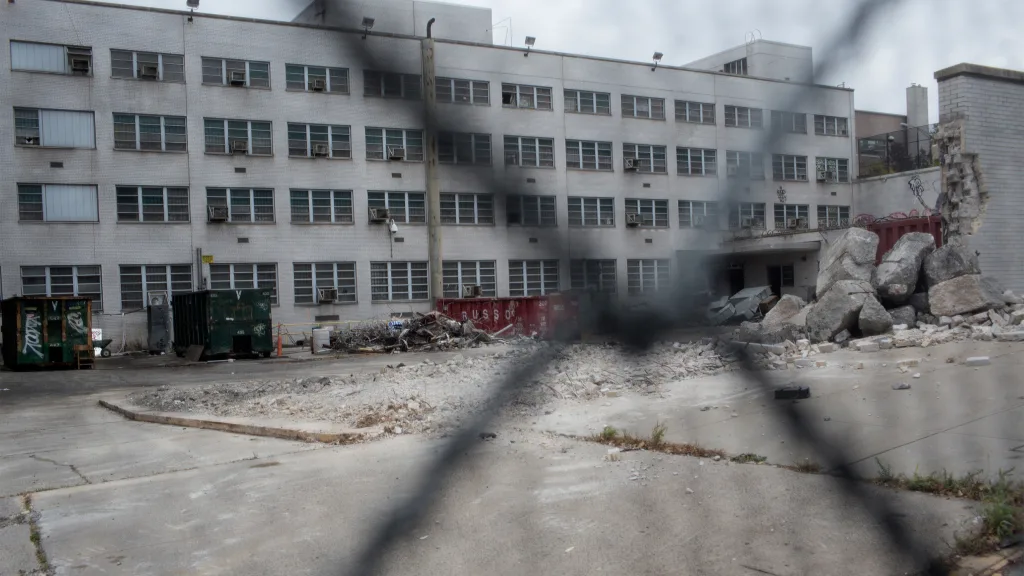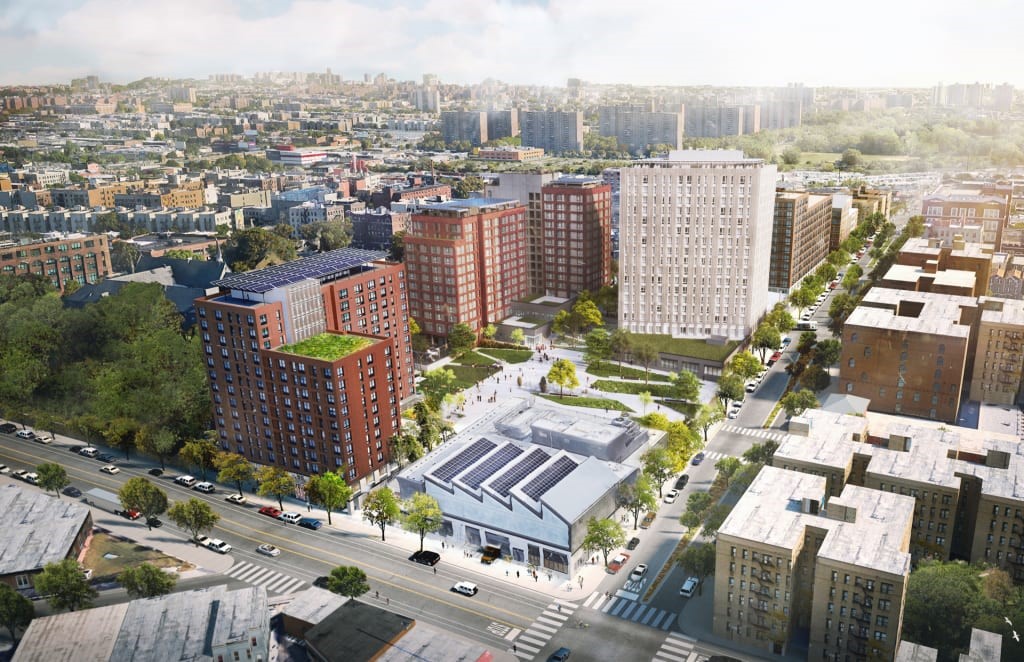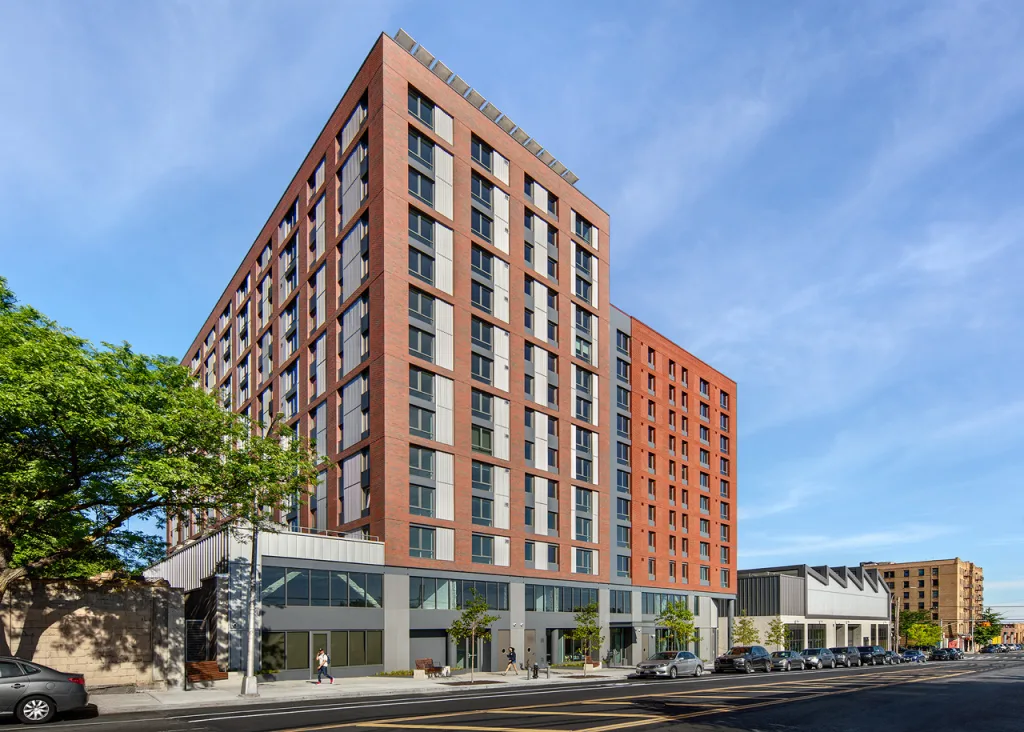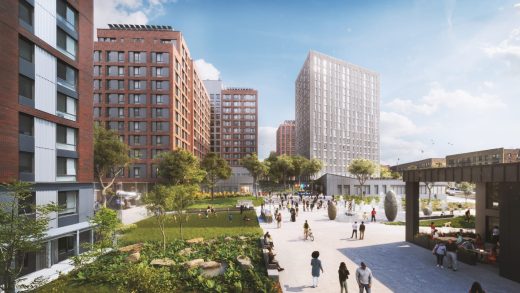Youth prisons are closing across the U.S. and getting a second life
Youth prisons are closing across the U.S. and getting a second life
Over the past 20 years, youth detention centers have closed at a rapid rate. Now, communities are figuring out what to do with the buildings.
In the South Bronx in New York City, the under-construction Peninsula redevelopment offers many of the typical features developers like to portray as essential to a vibrant, mixed-use district: a campus layout with apartments, a health and wellness center, and workspace for startups.
The $300 million development will also have early education facilities, an art center, and affordable housing. These community benefits are, in part, helping to correct for the site’s past. From 1957 to 2011, it was the home of Spofford Juvenile Detention Center, a site shut down due to its notorious reputation for unsanitary and inhumane conditions. Mayor Eric Adams, during an announcement about the project, noted that he had spent time in the detention center as a youth.

The Peninsula underscores a dramatic change in juvenile justice in the United States, as well as a potential reuse of facilities formerly used by the carceral state. A just-released report found that between 2000 and 2022, there was a significant, 75% decline in youth incarceration—a dramatic drop that has left a number of facilities looking for a future. The Peninsula, in part, seeks a bit of redemption for a site with such a painful past.
“It is politically possible to reuse these closed detention centers for other uses, particularly as community assets,” said Nicole D. Porter, senior director of advocacy for the Sentencing Project, who wrote a 2022 report on repurposing these sites. “It’s just important to recognize that there’s a possibility to reimagine detention centers, youth detention facilities, or any other carceral facility.”
In Beaumont, Texas, the Dream Center, a 50-acre social service site that was formerly the Al Price Juvenile Detention Center, offers space for youth-serving nonprofit groups, including addiction recovery. Donations and volunteer labor helped turn the site into a “hospital for lost souls.” A project to transform an adult prison in rural North Carolina into a collective farm for juveniles on probation offers another potential model for reimagining these facilities.
And in Cuyahoga County, Ohio, plans exist to demolish a former youth courthouse and replace it with a highway-spanning park to help link neighborhoods and create more greenspace.
Josh Rovner, director of Youth Justice for the Sentencing Project, said that the dramatic decline in youth incarceration wasn’t necessarily because of prison and criminal justice reform. A combination of less teen drinking, smoking and drug use, more time spent online, and even helicopter parenting has simply created less teen crime.

A new life for detention centers
Like adult prisons, a fair number of juvenile facilities exist in rural areas, where the land value and lack of density can make adaptive reuse projects more expensive and prohibitive. Local communities often count on these facilities for jobs and push back against closures. Also, states typically tend to take any savings from running these facilities—which can run in the millions of dollars annually—and plug other budget holes. New York and Utah, said Rovner, were some of the rare exceptions that repurposed the savings from shuttered juvenile facilities into programs for kids and teens.

Since 2000, correctional facilities for adults and children have closed in 21 states, and there are numerous models for creative reuse of these spaces, including parks and even TV and movie soundstages. There are financial challenges to these types of projects, especially now, when interest rates remain relatively high, construction costs have increased, and repurposing a sturdy space designed for incarceration can be difficult. But there are programs to fund such projects: In New York, the state has put hundreds of millions of dollars into transforming old prison sites, on recommendation from the prison redevelopment commission.
Advocates hope that examples like the Dream Center and Peninsula, and state programs supporting such redevelopments, can help spur on more efforts to find second lifes for these facilities.
“The potential is out there, and it’s the right thing to do,” said Porter. “What’s the community benefit to establishing assets that can support, as opposed to traumatizing and punishment? There’s a number economists can come up with, but there’s also a moral obligation.”
ABOUT THE AUTHOR
Fast Company
(2)



